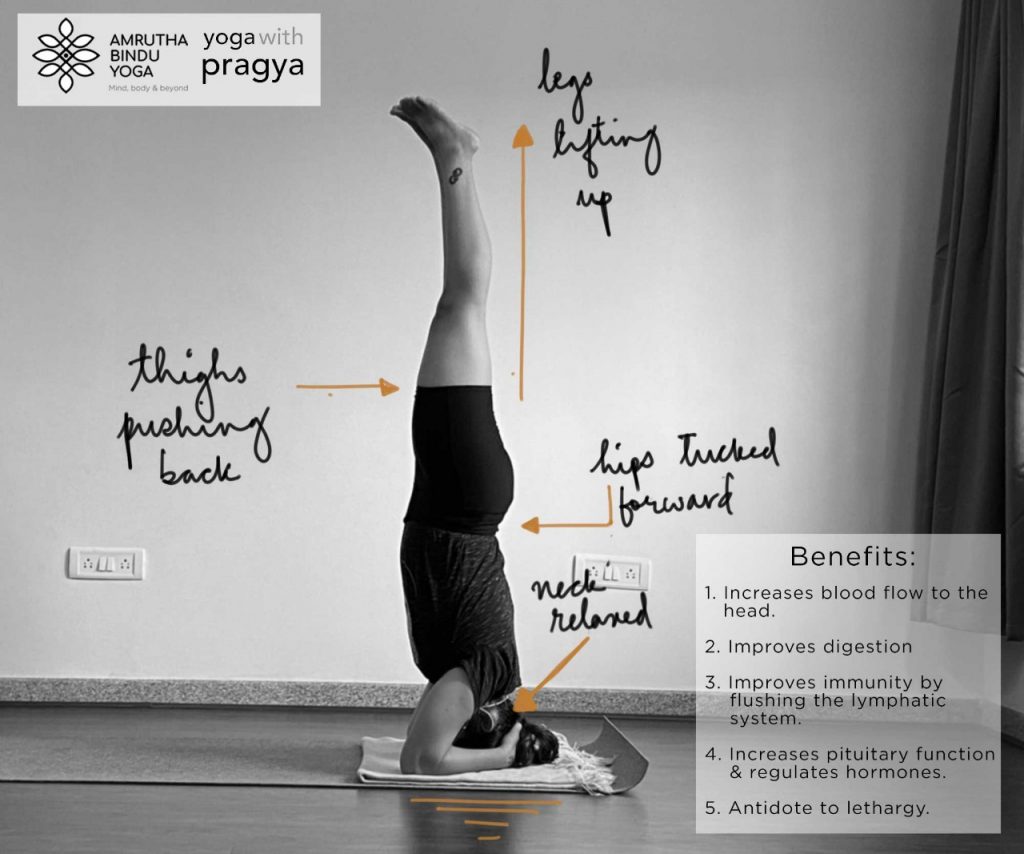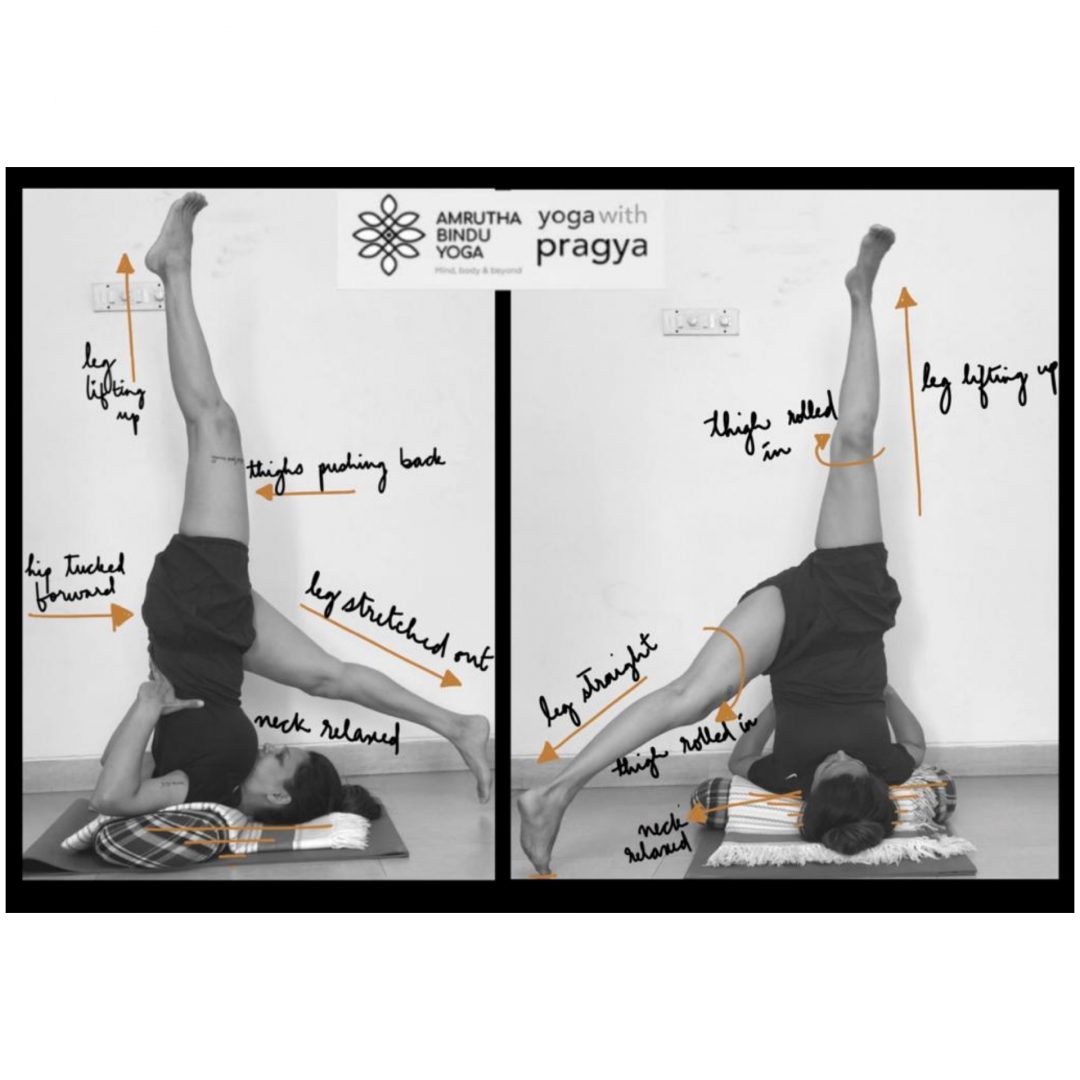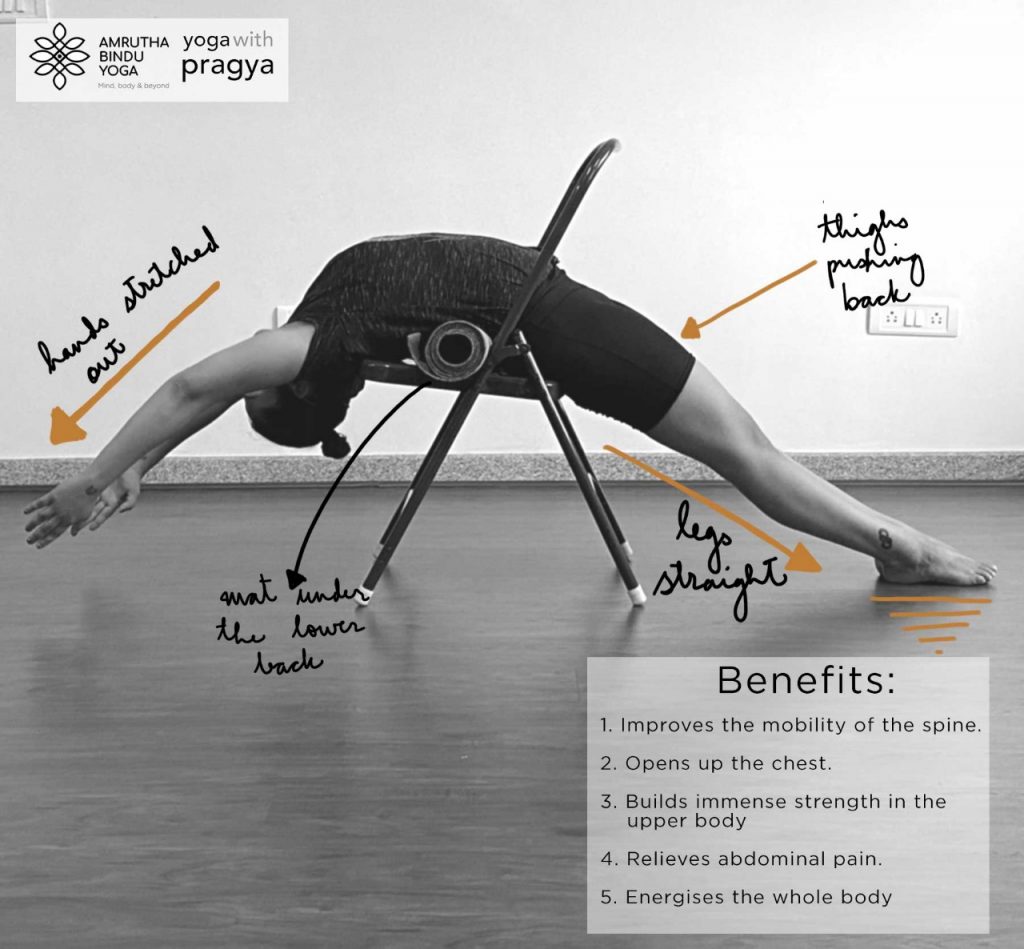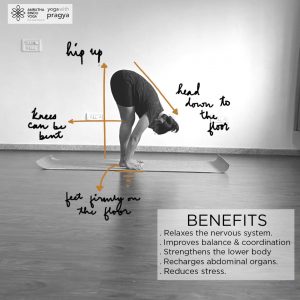
The weight of the body will be felt on the elbows and the position of the head may change. The face will appear to be flushed and the eyes either strained or puffed. It is therefore, advisable for a beginner to do the head stand in a corner where two walls meet, placing the head some 2 to 3 inches from either wall.(Light on Yoga, p 182)
The sirsasana is the king of the asanas. It’s not hard to see why. Sirsa means head, and this is the seat of the brain. The brain controls the entire nervous system. It is where your knowledge, intellect, wisdom and power come from.
It helps to:
- Increase blood flow to the head.
- Improve immunity by flushing the lymphatic system.
- Improve digestion.
- Relieve fatigue.
- Improve insomnia.
Contraindications
Those who suffer from high or low blood pressure must never practice sirsasana.
Busting the Myths
Most practitioners think that balance is the only important aspect of sirsasana. In reality, in this posture we have to keep our awareness on our body alignment at all times and continue to fix it moment by moment. Read on for some practice pointers…
Practice Pointers
- In the final position only an area the size of a rupee on top of your head should be in contact with the floor.
- The head, the trunk, the back of the thighs and the heels should be in a straight line. Avoid ‘banana-back’.
- Do not widen the elbows thinking it will give you better balance. In reality this will make the pose weaker and lead to a neck injury.
Stay tuned for more from our Yoga to Boost Immunity Sequence.
[ddownload id=”8170″] the Daily Yoga Practice Checklist.
Follow Amrutha Bindu Yoga here.
Follow Medha Bhaskar here.
Follow me (Pragya Bhatt) here.



